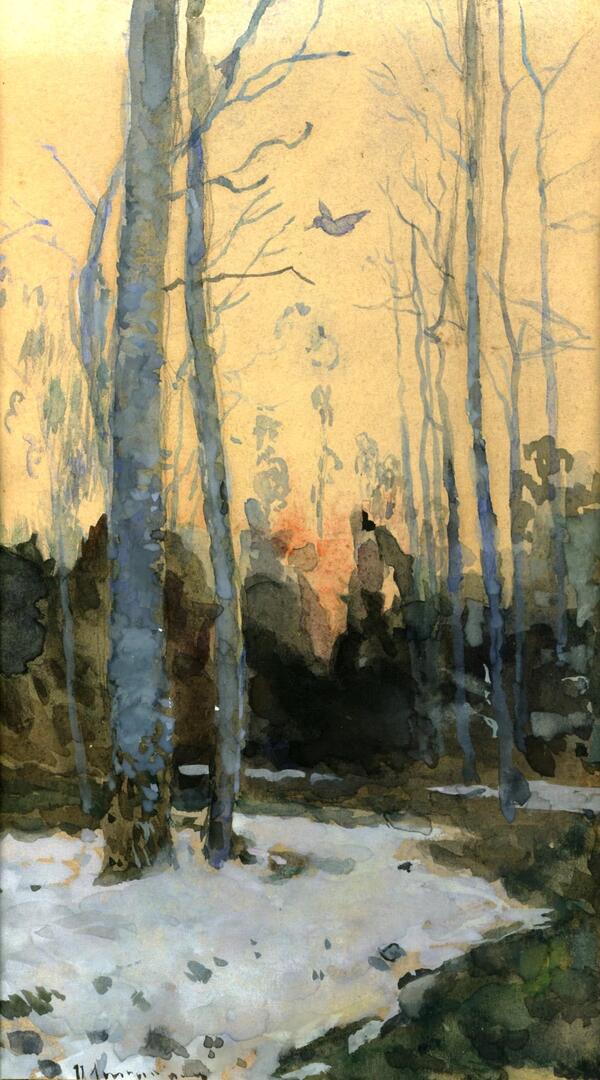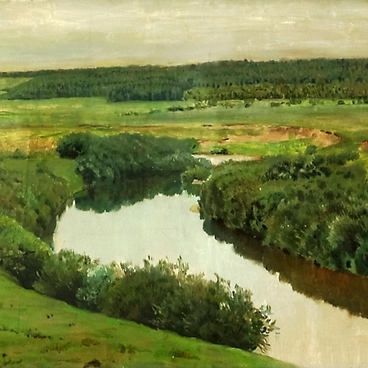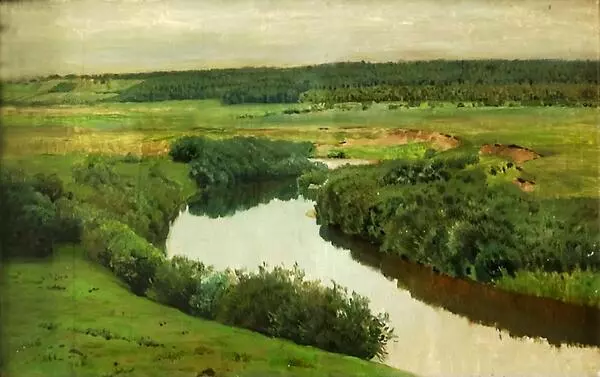Woodcock hunting. A spring forest landscape. It is a study portraying the awakening of nature through the eyes of a hunter. Isaac Levitan loved hunting and depicted a woodcock against the light sky between the trees. He used to bring these birds to the Chekhovs’ for supper. The original picture was painted in 1890, the Melikhovo museum has a copy dated from 1954 painted by the artist Anatoly Kozlinsky.
Levitan and Chekhov first met in the late 1870s, when they were both 19-year-old students. They often saw each other in a company of artistic young people in Moscow and Zvenigorod, where Anton Pavlovich worked in a hospital. The true cordial friendship between the artist and the writer began in 1885, when Levitan spent the first summer together with the Chekhov family at the estate of Babkino outside Moscow on the Istra River close to New Jerusalem. Initially, Levitan rented himself a modest cold house, where he caught a cold and fell ill, and then the Chekhovs put him up in a wing of the rented manor.
In the spring of that year, Isaac Levitan experienced a severe mental crisis, which drove him to a suicide attempt. In the large Chekhov family, he found a family-like, warm welcome and support. Levitan had a particular perception of a creative mind, awareness of the physical and spiritual connection with nature. Chekhov and Levitan had a lot in common — they were of the same age, both came from broken families, both were intellectuals and self-doubting natures. On April 8, 1892, Anton Pavlovich Chekhov wrote to Alexey Suvorin, publisher of “Novoye Vremya” from Melikhovo,
Levitan and Chekhov first met in the late 1870s, when they were both 19-year-old students. They often saw each other in a company of artistic young people in Moscow and Zvenigorod, where Anton Pavlovich worked in a hospital. The true cordial friendship between the artist and the writer began in 1885, when Levitan spent the first summer together with the Chekhov family at the estate of Babkino outside Moscow on the Istra River close to New Jerusalem. Initially, Levitan rented himself a modest cold house, where he caught a cold and fell ill, and then the Chekhovs put him up in a wing of the rented manor.
In the spring of that year, Isaac Levitan experienced a severe mental crisis, which drove him to a suicide attempt. In the large Chekhov family, he found a family-like, warm welcome and support. Levitan had a particular perception of a creative mind, awareness of the physical and spiritual connection with nature. Chekhov and Levitan had a lot in common — they were of the same age, both came from broken families, both were intellectuals and self-doubting natures. On April 8, 1892, Anton Pavlovich Chekhov wrote to Alexey Suvorin, publisher of “Novoye Vremya” from Melikhovo,





